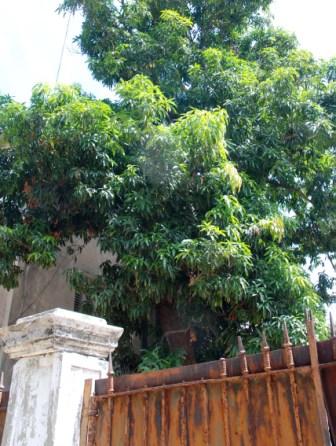The Special Mangos of Santiago de Cuba
Yenisel Rodriguez

Santiago de Cuba has some of the best mangos in the country, if not the world. They’re the famous mangos del Caney, which are also known as “bizcochuelo” (or sweetbread) mangos.
When I visited Santiago de Cuba a few years ago, the father of a friend promised me some as soon as I got to town. He swore I would taste the best flavor in my life; and though he committed an absolute sin, I can’t deny that he was right.
Before leaving, this good-natured man came up to me with plastic bag full of mangos for the road and said that I’d better eat all of them. He was exaggerating of course, though the fact is that I didn’t leave too many mangos in that bag.
Later that day I took what I had left to the train station. Once situated in the waiting area, I pulled one of my succulent mangos out of the bag and began to eat it as discreetly as I could.
Suddenly I heard the voice of a boy demanding something from his mother:
“Mom, I want some mango juice.”
“But they don’t have any here in the terminal,” responded the mother, condescendingly.
Immediately I discovered the role that I had played in all this. My ecological lunch had stirred the boy’s appetite.
A few seconds later the displeased demand exploded into a tantrum.
“I want mango juice!” the boy screamed.
I looked at my package where there were still three mangos. I could leave two for my grandmother (she never appreciates anything beyond the flavor of pork steak anyway), so I could give the biggest mango to this hungry little angel.
“Look, a mango for the little boy. It’s a bizcochuelo, one of the best,” I said to the mother, with me feeling like Mother Teresa of Calcutta at that point.
“Bizco… what?!,” the boy’s mother interrupted me.
“No sonny. My little boy doesn’t eat that stuff. What he wants is mango juice, the kind out of a can. That “Del frutal” brand. Plus that fruit maks a tremendous mess,” she added.
“You don’t have to worry about that. Look, I have a napkin…,” I said while looking at the boy, his eyes gleaming with the desire to reach out toward my fruit.
Suddenly the mother took out a can of pop and poured it down the boy’s throat. This was something surprising at first, those small hands rejecting the aluminum container. But immediately after, when the cola and the CO2 had done their job, his look turned into contentment.
Once I made it back to Havana I began feeling big knots in my stomach. The trip had caused indigestion.
I had thought about eating something that would hold back the diarrhea, but there in the train station I couldn’t find anything that would work for that. Suddenly in the station’s cafeteria I saw some cans with a brand name. They had the famous “Del Frutal” juice that my little comrade on the trip had liked so much!
“Well, I guess now I have enough justification to spend the last of my money on the trip.”
I thought about having a guava juice, since that would give me a way to determine how much distance there was between my mangos and the “Del frutal” juice.
I held the beautiful aluminum container in my hands. It had a special design; the picture looked like bizcochuelo guavas. I gently shook the can to check the thickness of that juice taken directly “del frutal” (from the tree); I knew from my own experience that guava gets real thick when it’s beaten by itself, without adding water.
I opened it and was concerned when I heard the pressurized burst very similar to the one made by the can that the mother of my little friend had in Santiago. So I wouldn’t be mistaken, I took my first big swallow and…
“What kinda shit it this,” I hollered. I felt offended. I could see the bottom of the can through this juice “from the tree” – or rather “from the spring.”
I had spent 20 pesos for a can of dingy water while a few yards from the station an old man was selling magnificent guavas.
“That’s pretty expensive isn’t it?” said someone who could see the disillusion and sense of failure in my look. What could I say? I had a can of “Del frutal” in my hands.
“Well, I remember ‘Taoro juices,’ from before,” commented my grandmother at home as she ate the three bizcochuelo mangos gracefully.
“Look, don’t say anything to me about canned juice,” I moaned – all the way from the toilet.





While deployed to Guantanamo in 1961 with MCB7, I worked in the materials testing lab on the main station. There were two mango trees outside the lab, I remember one was called Mami and the other Bizcochuelo. They were very difficult, the Mami was somewhat sweet and the Bizcochuelo was the most delicious, that I ever had. It is even now the benchmark to which I judge all mangos.
Ray Cormier